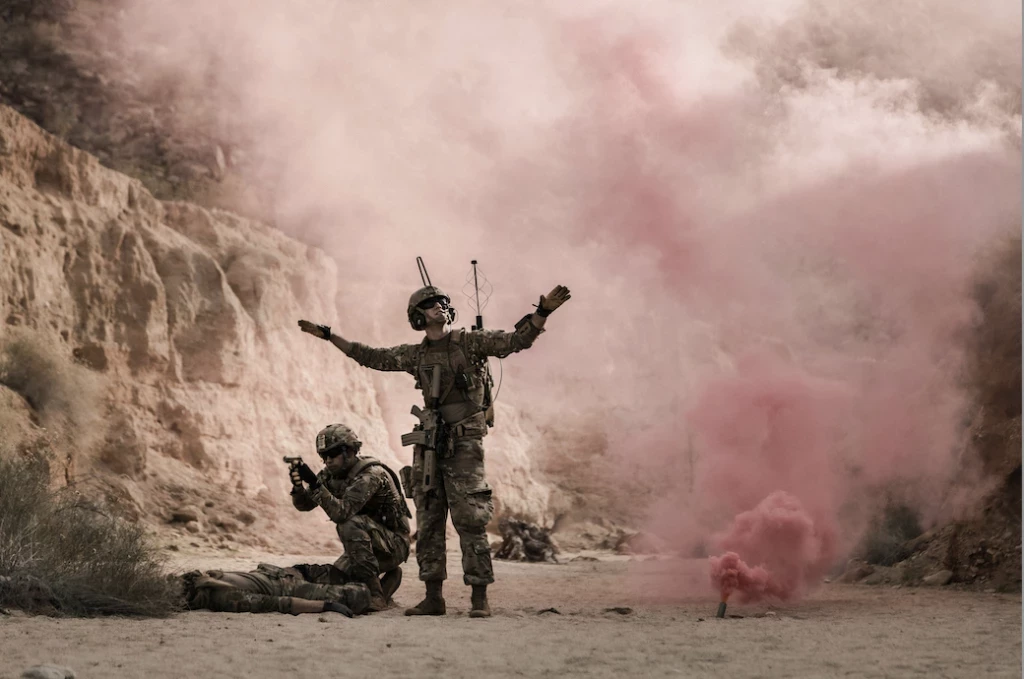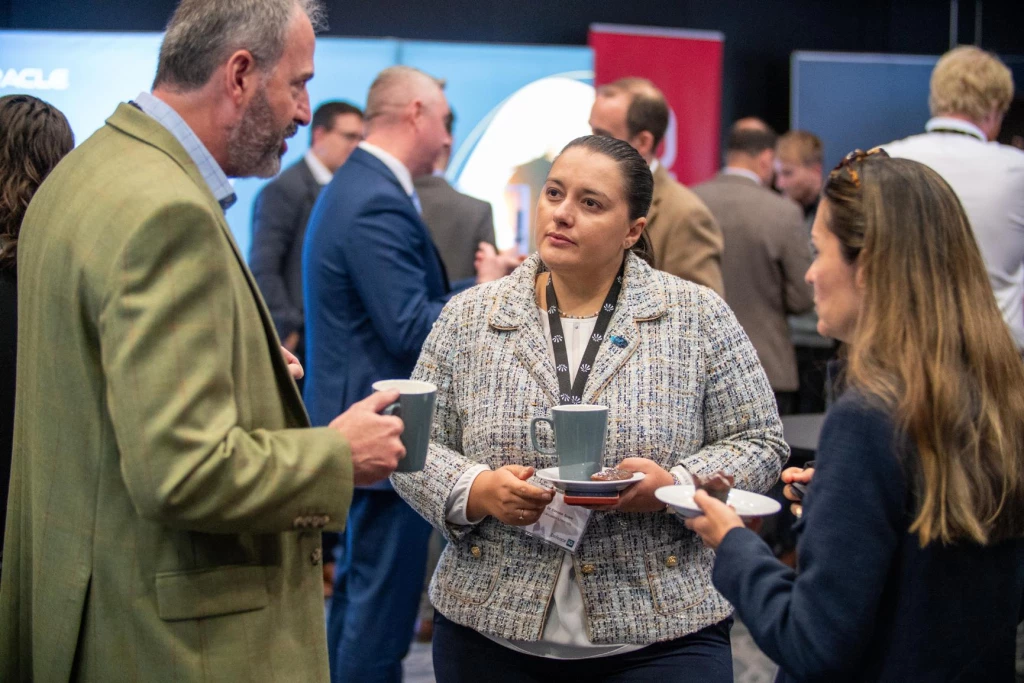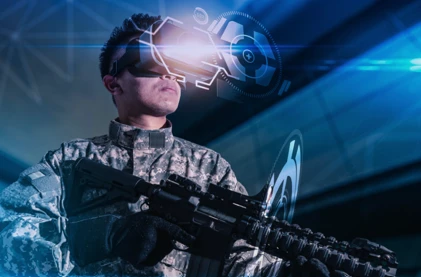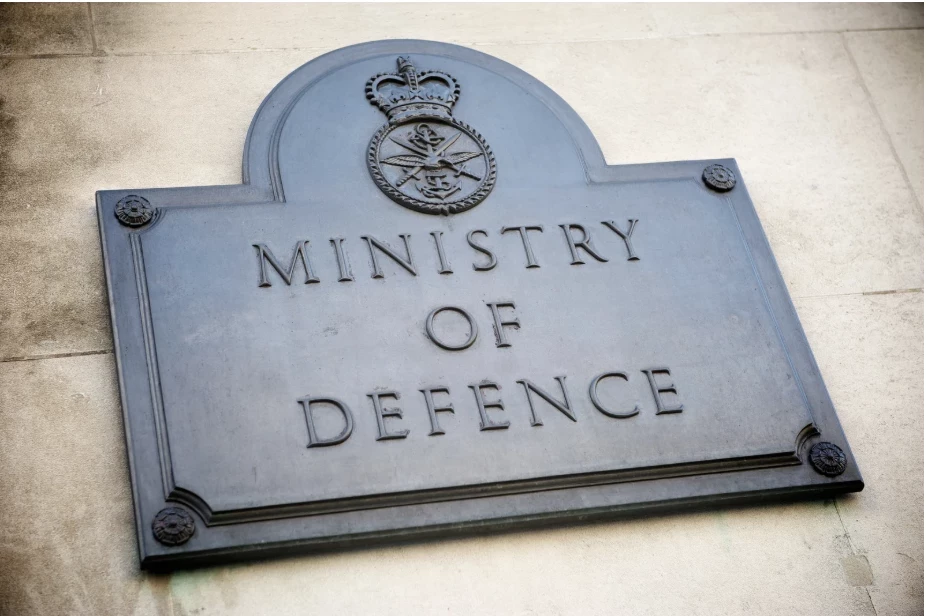BISim on how simulated training is shaping future soldiers
VBS STE: An MMO for the military? In part two of our interview, Peter Morrison co-CEO of BISim talks to us about realism, games technology, cloud-technology and the future of simulated training
Add bookmarkWhat does it take to create a realistic training simulation?
Don't miss part one of our interview: VBS STE: The future of simulated training
Defence IQ: Let's talk about realism. I can imagine true-to-life ballistics, physics and graphics being an important aspect of simulated tactical training. How do the internal workings of VBS compare to commercial games?
Peter Morrison: We upgraded the physics engine to PhysX by NVIDIA, which is the common standard for computer games. We did that around five or six years ago and it can be very realistic.
But, what we find is that for the majority of VBS users, the physics and sound only need to be good enough to facilitate what we call cognitive learning.
VBS training setup. Source: BISim
We’re not training a tank driver how to drive a tank. We’re typically training the participants, or practising military manoeuvres and decisions, which doesn’t require a really high fidelity physics. We’re a cognitive training tool.
However, we can facilitate more realistic ballistics and physics. For Sweden, we have made an incredibly realistic armoured gunnery training simulation, which requires perfect physics, and perfect ballistics. And we’ve been able to increase the fidelity of the physical model adequately in order to deliver on those training needs.
RECOMMENDED: How smarter technology will be used by military students in the future
Generally, we have a good base when it comes to physics, sound, animation, graphics and so on. But we can increase that fairly rapidly if required.
Defence IQ: How scalable is this process. If you get a contract for a specific country and for a specific set of armaments, do you create individual meshes and textures for those assets or do you use a generic model?
Peter Morrison: For the last 15 years, different military organisations have been paying us to build their vehicles and weapons systems, which is our business model. We then include the new content in the next version of VBS.
"For Sweden, we have made an incredibly realistic armoured gunnery training simulation, which requires perfect physics, and perfect ballistics"
At the moment we have a content library of 14,000 3D models. That includes a sizeable “moving model library”, which are comprised of characters and vehicles. For example, Sweden contracted us to build out their entire vehicle fleet. And more recently, they contracted us to specifically build the CV-90.
The Sweedish simulation for tank gunnery training can train people on using the platform, which is an order of magnitude more work than building the content out at a generic level.
Defence IQ: When it comes to vehicles, how in-depth is the simulation. Is each individual component present, such as optics, and are components simulated independently from one another. Or is the vehicle a single homogenous model?
Peter Morrison: It certainly used to be a single model. However, we actually now support a wide array of components and each component can be damaged. For example, the control system, the optics and the individual units in the vehicle can all take damage from a hit event. In our CV-90 simulation, we can accurately simulate the small details like a barrel strike, where the turret spins around after hitting an object.
There are all of these little unique features that need to be incorporated and we can reach this level of fidelity when required and it can be tweaked for every single vehicle. Military organisations tend to identify training needs for specific vehicles, and we can help them define the components that will enable that training need.
Swedish assets in VBS3
Defence IQ: It sounds incredibly scalable.
Peter Morrison: Exactly, that’s what it’s designed to be. We’re building a platform. If country X has additional requests; they don’t have to come back to Bohemia Simulations to do the work. They can improve the fidelity by using their own contractors or their own developers without too much effort.
RECOMMENDED: Demand for e-Learning technologies in military training rockets
Compared to buying a new game engine, and building the technology from scratch, it’s a much more affordable option to work with VBS because most of the underlying systems are already there.
Defence IQ: This idea of giving the military the tools to create their own assets is interesting. Does that also apply to event scenarios as well?
Peter Morrison: Indeed. We very rarely create scenarios. VBS is a virtual sandbox. You can create scenarios in accordance with a particular training environment, or training requirements.
Creating a scenario in VBS3
Defence IQ: You’ve mentioned that you have done work with over 50 countries, including Sweden, France, UK and the US. Do you mainly work with NATO and Western countries?
Peter Morrison: We’re not legally prohibited from doing business anywhere, but we have decided to work with NATO and NATO-friendly countries exclusively. We’re a small business, and we just need to be careful to manage our reputation. I can’t give you a list of countries that we don’t work with, but it’s safe to say that we do work with NATO and NATO-friendly countries.
Defence IQ: VBS products are predominantly played from a first-person viewpoint, right. Have you ever considered a strategic model for personnel higher up the chain?
Peter Morrison: Right. In VBS and even in VBS STE, the perspective is still from the first person viewpoint. However, we have different interfaces that are built on top of that for different levels of command and who the user is.
"At the moment we have a content library of 14,000 3D models. That includes a sizeable “moving model library”, which are characters and vehicles"
This product is called VBS tactics, which we’re working on with some US customers to provide a higher level view. As a result, you can create a set of orders or strategic plans that gets executed in VBS.
In VBS STE, we’re working on a similar kind of overlay, because we have these huge entity counts, potentially in the millions. You need a really easy way to either issue orders to military units, or issue behaviour to civilian units. And so we’re building a new interface to support that in VBS STE.
Defence IQ: With those huge entity counts, and the general enhancements that come with cloud technology, multi-nation wargames sounds like a logical development?
Peter Morrison: We actually have the technology to do that right now. It’s not going to be a technology problem that stops it. It’s going to be a policy, a security problem.
VBS STE would be perfectly suited to multi-nation wargames. It’s up to respective militaries to solve their policy issues to implement it. There might be issues with bandwidth as well, as this scenario would involve transferring huge amounts of terrain data, communications data, and not to mention the number of entities that would be involved in a multi-nation scenario.
Defence IQ: Let's talk about the games industry. How has it's meteoric rise impacted your journey. Do you maintain a level of graphical fidelity that keeps up with current games, or is that an area that perhaps isn’t at the top of your list?
"VBS STE would be perfectly suited to multi-nation wargames"
Peter Morrison: For many years, we leveraged the Arma computer games and we had a technology sharing agreement with Bohemia Interactive Studio. I think we still have that technology sharing agreement, where if they do something cool on the game side, we can take that and use it for free.
Defence IQ: As I understand, the company built its own game engine in 2012, marking a move away from the engine used by Bohemia Interactive?
Peter Morrison: Indeed. We started to apply this game based technology from the entertainment space to different military training needs. In 2012, we sold the business to a private equity firm, and then we had the capital to spend on building new technology.
We built a product called VBS Blue IG, which uses a new rendering engine, and uses an image generator for deploying on simulators, tank simulators, flight simulators.
However, we’ve rebuilt the engine completely, and we don’t leverage that much, but we still aim to stay concurrent with whatever modern AAA computer games are doing.
"We have different interfaces for different levels of command"
Whether that is normal mapping [advanced geometry simulation], or new animation systems, or new light. In fact, we’re currently looking at real-time ray tracing [realistic lighting simulation], which is a very exciting new technology supported on the latest NVIDIA graphics cards. We do aim to maintain concurrency with whatever the industry-leading technologies are.
RECOMMENDED: How the Danish Air Force Academy is taking serious gaming seriously
But, there’s always a but, when you’re doing cognitive learning, like what we’re doing, graphics aren’t really required, but it is very nice to have.
Flight sim training. Source: BISim
High fidelity graphics are also very expensive, as is the case with things like high fidelity terrain. We’re always trying to walk that fine line in ensuring the technology looks current, but at the same time, we don’t have the budgets of blockbuster games like Grand Theft Auto 5 which had a budget around $250 million.
Defence IQ: Indeed. Games are a big part of modern culture and are certainly pervasive amongst young adults. Would most military professionals have ease grasping the system or does it require some training?
Peter Morrison: Games are absolutely pervasive in our culture, you are correct. But over 50% of revenue from computer game sales is from mobile games. And just because you’ve played mobile games doesn’t necessarily mean you can pick up a first-person shooter.
Certainly, if you’ve played a first-person shooter before, like Battlefield or Fallout, then VBS is going to feel familiar to you. Interestingly, what we’re finding is that two-thirds of trainees that are using our software have never played a first-person shooter.
So making sure the software is easy to use, making sure that it has in-game tutorials, is critically important. And I can say that even though there have never been more gamers than there are today, the training requirement from the user on VBS hasn’t really changed.
My goal is that we can give away with training courses in the next few years. Because we still offer, for example, a VBS 3 administrators course. I think that the software needs to be easy enough to use that you don’t need to attend a five-day course. So that’s really our goal. From a user perspective, like soldiers, they don’t have to attend a training course. They do a couple of hours of in-game training and they’re pretty much good to go.
Defence IQ: Excellent. Where would you like to see this technology go in the future?
Peter Morrison: We’ve really kept our head down and focused on what the military needs. The US army has been really good at describing what it would like to see in a 2023 to 2025 timeframe. And it very much is this cloud-based simulation that allows them to have a single terrain repository and a common virtual environment.
This is a need that we’re seeing in all major western militaries, especially in the United States and the UK. Machine learning is going to help us with artificial intelligence and we’ll be able to continue to leverage industry developments like virtual reality and augmented reality. We will see more and more of that in the military space.
VR flight sim training. Source: BISim
Leveraging cloud scalability is also going to be huge. Google just announced Google Stream, which is a very exciting technology. In essence, I can rent a computer game, and stream it directly from Google servers. No installation required. And because it is being streamed from Google servers and not being run from my computer, machine specifications don’t factor into my ability to run the game.
The military right now spends a fortune on all these battle simulation centres, so they are understandably interested in this technology. Centralising simulation and centralising the terrain data would result in some pretty massive cost savings.
To summarise, you’re going to see a push towards the cloud over the next five to ten years in all military organisations. You’re going to see some huge investments in fully autonomous AI, leveraging machine learning. And you’re going to see a huge investment in augmented reality to a point where we can attach an augmented reality device to a soldier that can be used in both training and operational situations. That’s Pete Morrison’s prediction for the next five to ten years.
"Centralising simulation and centralising the terrain data would result in some pretty massive cost savings"
Defence IQ: Very interesting predictions. Do you think that would affect the way you train military personnel. Would your traditional instructor be geared more toward virtual and simulated training?
Peter Morrison: Yes, I would be surprised if that wasn’t the case. While nobody can predict what will happen ten years from now, I believe that all tank simulations will be done on a real tank. So you’d be sitting in your tank-setup in the barracks, and using augmented reality technology, you could engage targets in a virtual environment. I think that’s where we’re going to see a major effort in the coming years.
Likewise, if you’re an infantryman, you’re going to be wearing a headset that allows you to run around your barracks and you’ll create soldiers in the headset that you can engage.
You’re going to to see this merger of simulation and live training. There will still be a need for cognitive training tools like VBS, that won’t change. But you’re going to begin to see much more augmented reality creeping into live training, and operations as well. So it’s a very exciting time.
RECOMMENDED: Innovation lessons defence can learn from other sectors
In fact, there’s a big project underway called IVAS, Integrated Virtual Augmented System. I think that has got half a billion dollars’ worth of funding approved by Congress.
Defence IQ: Thank you for speaking with us today. I look forward to seeing more of BISIm's work in the future.
Don't miss part one of our interview: VBS STE: The future of simulated training
























